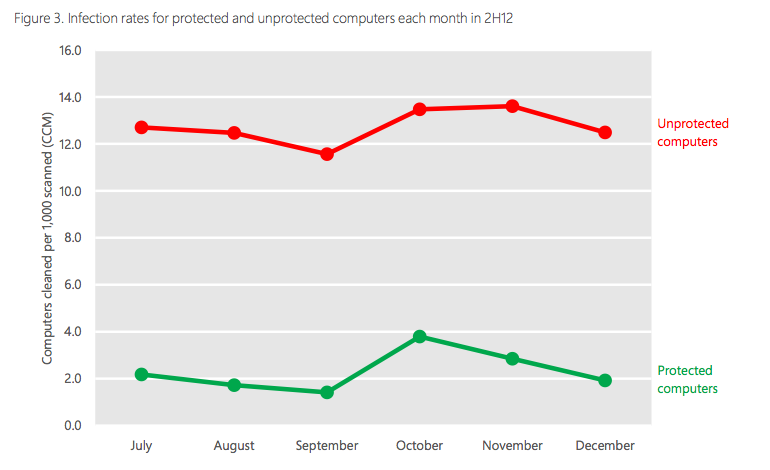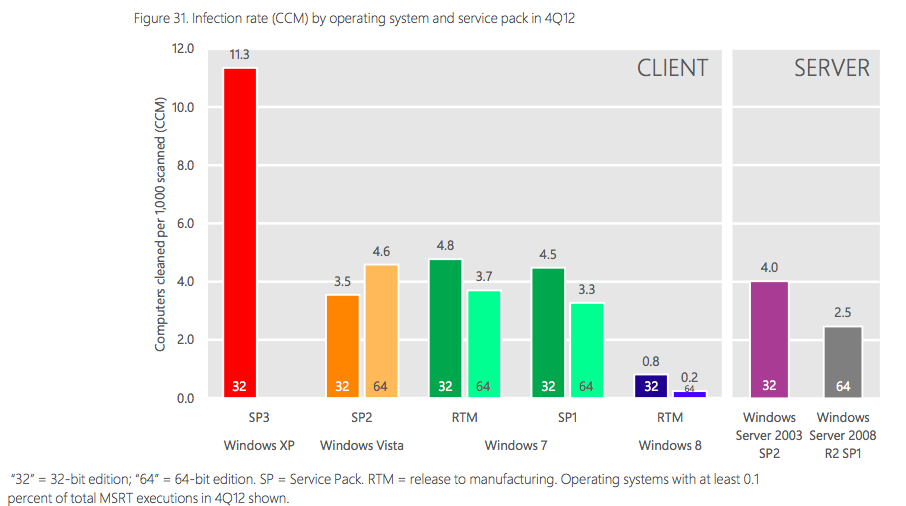What you don’t know can hurt you: raising the bar on enterprise security
When it comes to embracing rising trends in tech, it’s not just CIOs and IT managers who are calculating investment, risk and return. Cybercriminals are doing exactly the same.
The best way for exploits and malware to make money and mischief is if they target where the people and the information are. As enterprises move towards flexible working and ‘bring your own device’, online criminals are doing the same. And so security must follow suit.
Microsoft’s latest Security Intelligence Report (SIR) reveals the latest threats to big business and, if left unchecked, they pose a real risk for companies embracing big technology changes.
With freedom comes responsibility
The move to mobile working, online collaboration and cloud applications all mean that a lot more day-to-day work is taking place via the web. Blanket internet bans are no longer practical, and criminals are jumping on the opportunity to take advantage of employee naivety.
Microsoft’s report reveals that vulnerabilities in web browsers continued a multi-year upward trend. In addition, the most prevalent threat detected on enterprise devices was a trojan from a malware family called JS/IFrameRef, which embeds malicious JavaScript in legitimate website that redirect the browser to a malicious website.
Just encouraging safe online behaviour in employees can reduce the risk of attack. Many employees, however, have bad habits ingrained from their personal use of technology, so an active approach to education and safety is vital to any company security plan.
The danger of digital documents
Malware which targets applications were especially common in enterprises. Of course, working on the go, collaborating via tablets and editing some text on the commute have all proved extremely popular. The ubiquitous PDF document, combined with online file sharing has saved businesses time, money and a lot of hassle, and cyber criminals have taken note.
Anti-malware for every device
Robust antimalware software is essential, but one of the most shocking findings of Microsoft’s SIR is that almost a quarter of the devices monitored around the world are not running real-time antimalware software, or it’s out of date.
In an enterprise environment this could arise from someone using their own unprotected device on a company network; it might even be the CEO using their new personal tablet at work. Monitoring and management of well-implemented ‘bring your own device’ policies can all contribute to keeping rogue devices to a minimum.
The types of threat facing enterprises are bad enough but unless you suffer an attack, it might just seem like a scare story. What is much more down to earth is the finding that unprotected devices are 5.5 times more likely to be infected with malware or unwanted software than protected ones. That means even one unprotected device on your network is a serious risk.
When it comes to magnitude, maybe pictures speak louder than words:
What you use matters too. Whilst Group Policy has been the common go-to for CIOs to manage antimalware software and application updates on a company’s devices, the increase in ‘bring your own device’ and the demand for modern adaptable hardware like tablets and smartphones has made security management a much more complex problem.
Add to this the gradual blending of personal and professional in the same device, and the threats increase. For example, the report shows that the most common type of phishing attacks remain focused on social networking sites. Social networks present a significant security danger, but it is hard to simply block those sites for employees who use them for both work and play on the same device.
The good news is that the report also found that devices running the Windows 8 operating system not only had the lowest number of unprotected devices, but also by far the lowest infection rates.
Whilst it is common for recently released operating systems to have lower infection rates, what makes Windows 8 different is that Windows Defender, which provides real-time antimalware protection, is included as up and running, out of the box.
In addition, Windows 8 touch devices like the Surface and Windows Phone, mean that you get that protection and centralised security control, while giving your employees the flexibility and online freedom they have come to expect from technology.
It’s a marathon, not a sprint
When it comes to online security, it’s not about staying ahead on any one particular exploit or trojan. Cyber criminals will always be coding, hacking and inventing new ways to take advantage of vulnerabilities. This means that security has to be baked into new initiatives such as consumerisation, flexible working and mobile devices from the very start.
What’s most important is designing infrastructure and adopting devices and software that are created with security and management in mind. Why not talk to your account manager to discuss the ways that Microsoft can help you build your protection so it’s fit for the long haul.
Next steps
Download Microsoft’s Security Intelligence Report.


